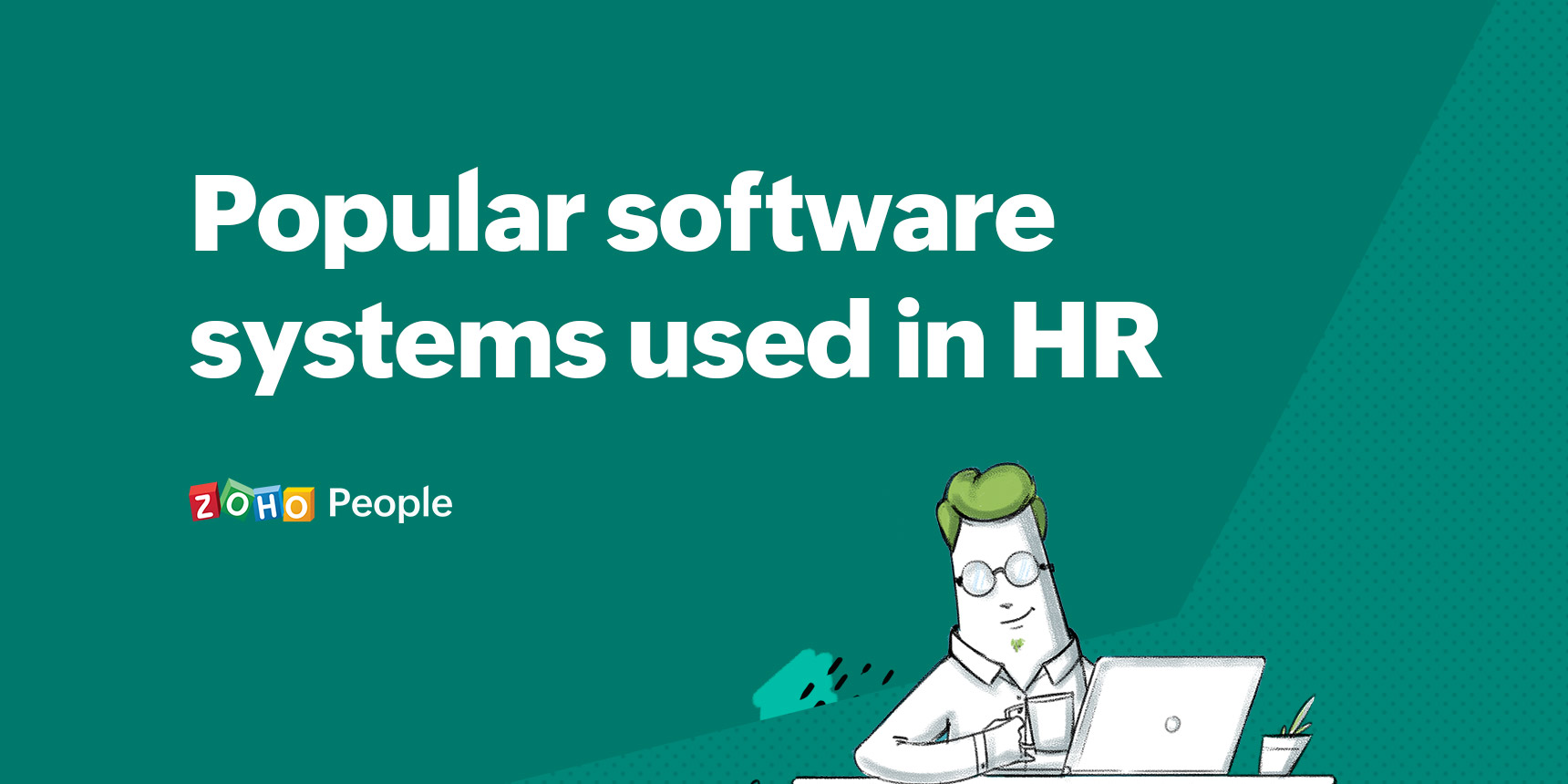HR software helps manage employee data and streamline HR tasks. These tools are essential for modern businesses.
In today’s fast-paced work environment, handling HR tasks manually can be overwhelming. HR software offers solutions to simplify and automate these processes. From recruitment to payroll, the right software can make a significant difference. It not only saves time but also reduces errors and ensures compliance with legal standards.
For businesses of all sizes, finding the right HR software is crucial. This blog will guide you through understanding the various types of HR software available. You’ll learn how they can benefit your organization and help manage your workforce efficiently.
Introduction To Hr Software
Human Resource (HR) software helps manage a company’s workforce. It streamlines tasks like payroll, recruitment, and employee data management. HR software can save time and reduce errors. Let’s dive deeper into its purpose, benefits, and key features.
Purpose And Benefits
HR software automates many HR tasks. This reduces the workload for HR staff. Automation means fewer mistakes and more consistency.
It also helps in managing employee data securely. Companies can track attendance and performance easily. This software can improve compliance with labor laws.
Here are some key benefits:
- Time-saving: Automates repetitive tasks.
- Accuracy: Reduces human errors.
- Data security: Keeps employee information safe.
- Compliance: Helps follow labor laws.
- Efficiency: Streamlines HR processes.
Key Features
HR software comes with many useful features. Each feature helps in managing HR tasks better.
| Feature | Description |
|---|---|
| Payroll Management | Automates salary calculations and payments. |
| Recruitment | Helps in posting jobs and tracking applicants. |
| Employee Database | Stores and organizes employee information. |
| Attendance Tracking | Keeps track of employee attendance and leaves. |
| Performance Management | Monitors and reviews employee performance. |
These features make HR tasks simpler and more efficient. They help HR teams focus on important work.

Credit: www.zoho.com
Types Of Hr Software
Human Resources (HR) software is essential for managing workforce needs. Different types of HR software cater to various functions. These tools help businesses streamline HR tasks, improve efficiency, and enhance employee satisfaction. Below, we explore two important types of HR software.
Human Resource Management Systems (hrms)
Human Resource Management Systems (HRMS) cover a wide range of HR functions. HRMS integrates various HR activities in one platform. This includes employee data management, payroll, and benefits administration. It also handles time tracking, performance reviews, and employee self-service. HRMS helps streamline operations and reduce administrative tasks. It is ideal for businesses of all sizes. The system ensures compliance with labor laws and company policies.
Applicant Tracking Systems (ats)
Applicant Tracking Systems (ATS) simplify the hiring process. ATS helps manage job postings and track applications. The system sorts and filters resumes based on keywords. ATS allows recruiters to manage candidate communications and schedule interviews. It also provides analytics to improve hiring strategies. ATS ensures a smooth recruitment process, saving time and effort. This software is essential for companies with high-volume hiring needs.
Core Hr Software Solutions
Core HR software solutions play a crucial role in managing human resources. These tools streamline various HR processes, making them more efficient and accurate. From payroll management to time and attendance tracking, core HR software ensures smooth operations.
Payroll Management
Payroll management software automates salary calculations and tax deductions. It ensures employees are paid correctly and on time. This software also handles bonuses, commissions, and overtime payments. Many solutions integrate with accounting systems, reducing manual work. Additionally, payroll software helps with compliance, ensuring all legal requirements are met.
Time And Attendance Tracking
Time and attendance tracking software monitors employee work hours. It records clock-in and clock-out times, helping to manage shifts effectively. This software also tracks overtime and absenteeism. With this tool, HR can ensure accurate payment based on actual hours worked. Many solutions offer mobile apps for easy access and real-time updates.

Credit: www.zoho.com
Talent Management Software
Talent Management Software plays a crucial role in today’s HR departments. This software helps companies manage their employees’ growth and performance. It ensures that the right talent is recruited and retained.
Performance Management
Performance Management tools help track and evaluate employee performance. They provide a structured approach to setting goals and expectations. These tools offer real-time feedback and performance reviews.
Key features include:
- Goal setting and tracking
- Regular performance reviews
- Feedback systems
- Analytics and reporting
These features help managers understand employee strengths and areas for improvement. They also help in making informed decisions about promotions and raises.
Learning And Development
Learning and Development tools focus on employee growth. They provide training programs and educational resources.
Key benefits include:
- Access to online courses
- Customizable training modules
- Progress tracking
- Certifications and badges
These tools help employees acquire new skills and improve existing ones. This, in turn, boosts employee engagement and retention.
Companies can create a learning culture. This ensures continuous development and business success.
Employee Engagement Tools
Employee engagement tools are essential for every HR department. These tools help keep employees motivated and connected. They foster a positive work environment. Two key features of these tools are feedback systems and recognition programs. Let’s explore these features in detail.
Feedback Systems
Feedback systems allow employees to share their thoughts. They provide a platform for open communication. With these systems, employees can give and receive feedback. This helps improve performance and satisfaction. Regular feedback keeps everyone on the same page. It also helps identify areas for improvement. Managers can address issues before they become problems.
Recognition Programs
Recognition programs celebrate employee achievements. They highlight hard work and dedication. These programs boost morale and encourage productivity. Employees feel valued and appreciated. Recognition can be as simple as a thank you note. It can also be a formal award. Acknowledging efforts inspires others to perform better. Everyone loves to be recognized for their hard work.
Benefits Administration Software
Benefits administration software streamlines the management of employee benefits. It automates various processes, saving time and reducing errors. This software helps HR professionals manage health and wellness programs, retirement plans, and other benefits more efficiently.
Health And Wellness Programs
Benefits administration software simplifies the management of health and wellness programs. HR can easily track employee participation in health initiatives. They can also manage wellness incentives and rewards. This ensures employees stay motivated and engaged in their health plans.
Retirement Plans
Managing retirement plans becomes easier with benefits administration software. HR can efficiently handle employee enrollments and contributions. The software provides detailed reports on retirement savings. Employees can also access and manage their retirement plans online. This transparency and ease of access improve employee satisfaction.
Hr Analytics And Reporting
HR Analytics and Reporting play a crucial role in today’s human resource management. These tools help HR professionals make better decisions, predict future trends, and improve overall efficiency. By using advanced software, HR teams can track key metrics, generate insightful reports, and drive strategic initiatives.
Data-driven Decision Making
Data-driven decision making relies on accurate data collection and analysis. HR software provides tools to gather data from various sources. This data includes employee performance, attendance, and engagement levels. With this information, HR teams can identify patterns and trends. They can then make informed decisions to improve workplace productivity.
Benefits of Data-Driven Decision Making:
- Enhanced employee satisfaction
- Improved retention rates
- Optimized recruitment processes
- Better workforce planning
Predictive Analytics
Predictive analytics uses historical data to forecast future outcomes. In HR, this means predicting employee turnover, performance trends, and training needs. HR software with predictive analytics capabilities can help anticipate challenges. It can also identify opportunities for growth.
Applications of Predictive Analytics in HR:
- Foreseeing employee turnover and mitigating risks
- Identifying high-potential employees for leadership roles
- Optimizing training programs for skill development
- Forecasting hiring needs based on company growth
By leveraging predictive analytics, HR departments can proactively address issues. This leads to a more agile and responsive organization.
Choosing The Right Hr Software
Choosing the right HR software is crucial for any business. The right software streamlines processes and boosts efficiency. It helps manage employee data, payroll, and recruitment. Making the best choice requires careful consideration. Here’s how to choose the right HR software for your company.
Assessing Company Needs
First, understand your company’s specific HR needs. Identify the tasks that require automation. This could include payroll, attendance tracking, or employee onboarding. Knowing these needs narrows down your software options.
Consider the size of your company. Small businesses might need basic features. Larger organizations may require more advanced tools. Define the essential features for your business. This ensures the software meets your requirements.
Evaluating Vendors
Research different HR software vendors. Compare their offerings and read user reviews. Look for vendors with a good reputation. Check if they offer customer support. This is crucial for smooth implementation and troubleshooting.
Evaluate the software’s user interface. It should be intuitive and easy to navigate. A complicated interface can slow down processes. Ask for a demo or trial period. This helps you understand how the software works in real-time.
Consider the cost of the software. Ensure it fits within your budget. Compare the pricing models of different vendors. Some may charge a one-time fee, others a subscription. Choose the one that offers the best value for your needs.
Implementing Hr Software
Implementing HR software can streamline your company’s human resources processes. It helps manage employee data, payroll, benefits, and more. Proper implementation ensures you get the most out of the software.
Integration With Existing Systems
HR software must work well with your current systems. This includes payroll, attendance, and performance tracking. Ensure the new software can connect seamlessly. This reduces the risk of data errors. It also saves time by avoiding manual data entry.
Check if the HR software supports APIs. APIs allow different software systems to communicate. This makes integration easier. Also, look for software that offers data migration tools. These tools help transfer existing data to the new system.
Training And Support
Training is vital for a smooth transition. Ensure the software vendor offers comprehensive training. This includes tutorials, webinars, and in-person sessions. Proper training helps employees understand the new system. It reduces resistance to change.
Support is equally important. Choose software with good customer support. This includes phone, email, and chat options. Support should be available during your business hours. Quick resolution of issues ensures minimal disruption to your HR processes.

Credit: www.clearcompany.com
Frequently Asked Questions
What Software Is Used For Hr Management?
HR software typically includes systems for payroll, benefits, and employee data management. Common examples include ADP, Workday, and BambooHR.
How Does Hr Software Help Businesses?
HR software streamlines administrative tasks, improves data accuracy, and enhances employee experience. It also supports compliance and data security.
What Features Should Hr Software Have?
HR software should have features for payroll, benefits management, employee self-service, and reporting. Integration with other systems is also crucial.
Can Hr Software Improve Employee Engagement?
Yes, HR software can improve engagement through performance tracking, feedback systems, and communication tools. It fosters better workplace relationships.
Conclusion
Choosing the right HR software is crucial for any business. Various options exist, each with unique features. Assess your needs and budget before selecting. Good HR software simplifies tasks and improves efficiency. It can aid in payroll, recruitment, and employee management.
Always consider scalability for future growth. Proper implementation and training are key. Investing in good HR software benefits your business long-term. Make an informed choice to support your HR team effectively.




